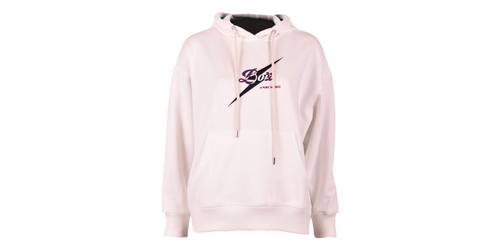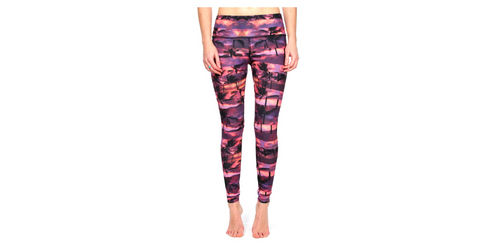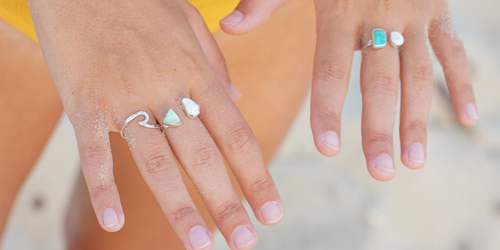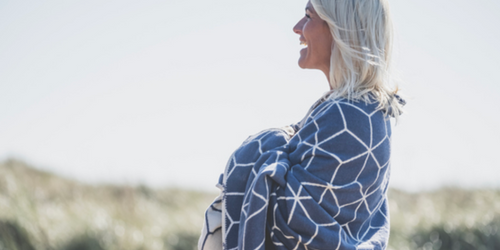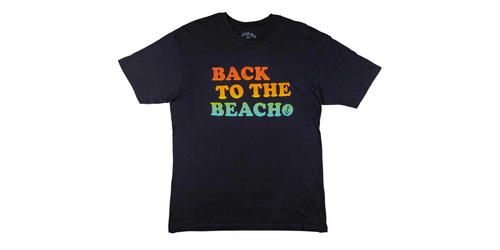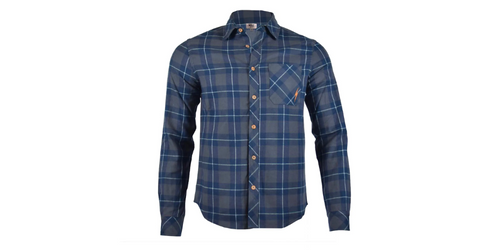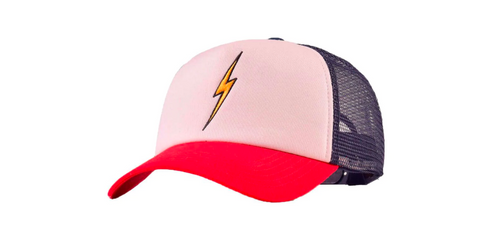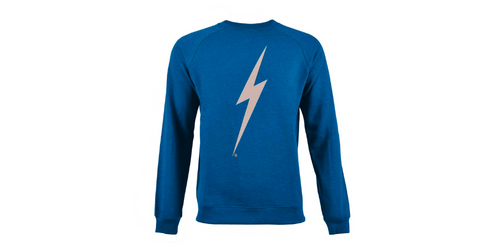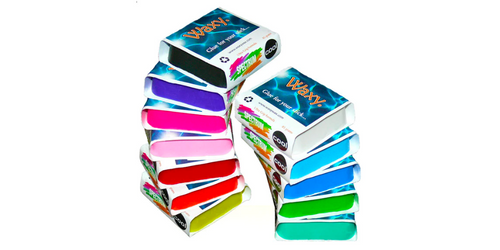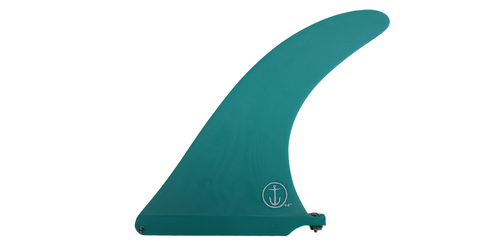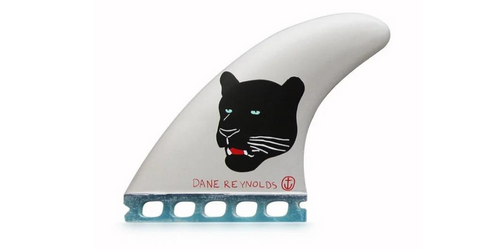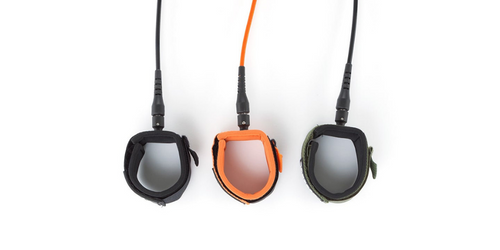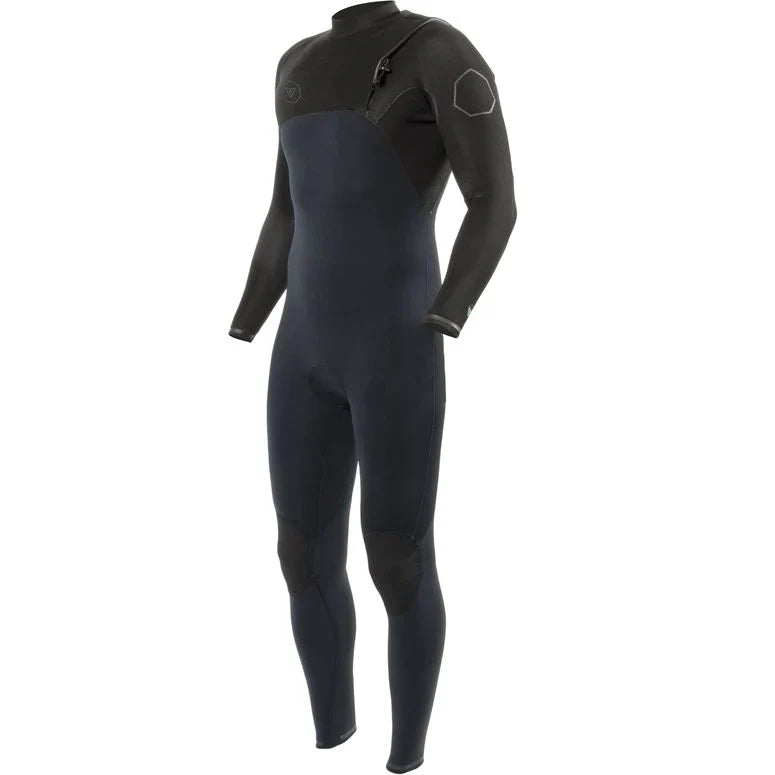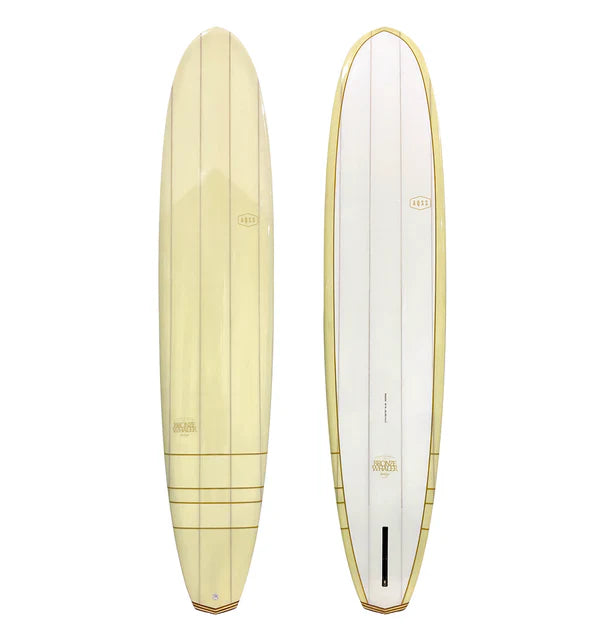How To Cross-Step On A Longboard
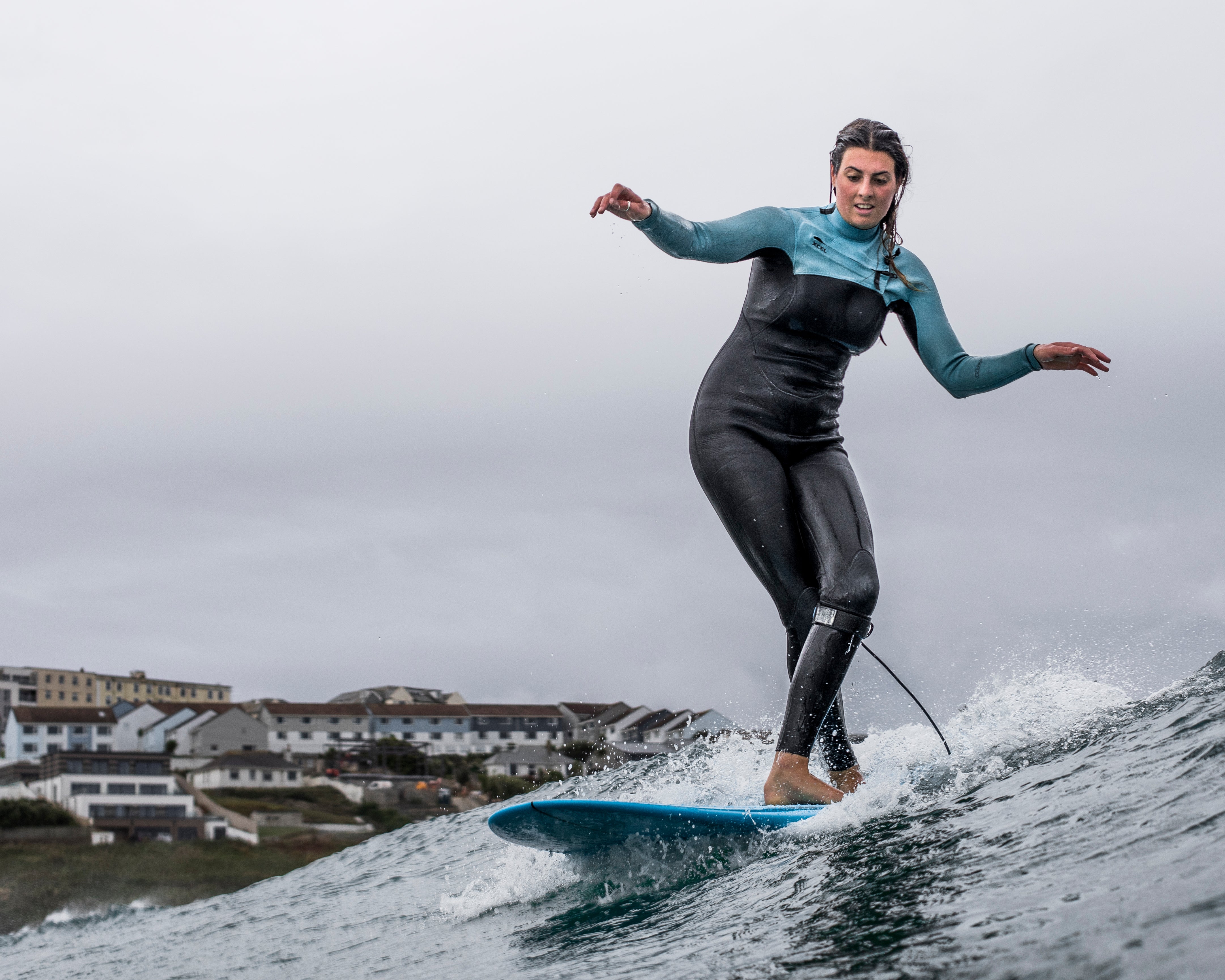
A starting point is to try cross-stepping on land before jumping onto a longboard surf skate or your surfboard. Balance is best achieved with your knees bent, head and shoulders up, hips slightly pushed forward, and your arms down, or stretched at shoulder height.
Your knees should be bent by at least 3 to 5 inches (considering that straight legs represent 0 inches of flex). The trick is to maintain this posture as you move. This requires you to keep your stationary leg bent with no upward movement as you step. Stop mid step and hold this position for a few seconds. You need to get happy balancing on one foot.
As you start to put your foot down, land toes first, then bend your stationary knee more to bring your heel down. To successfully take the next step, you should briefly be in a balanced position with equal weight on both feet before you initiate the next step. Learning to walk slowly and precisely will translate, over time, into that look of controlled style with seemingly no effort.
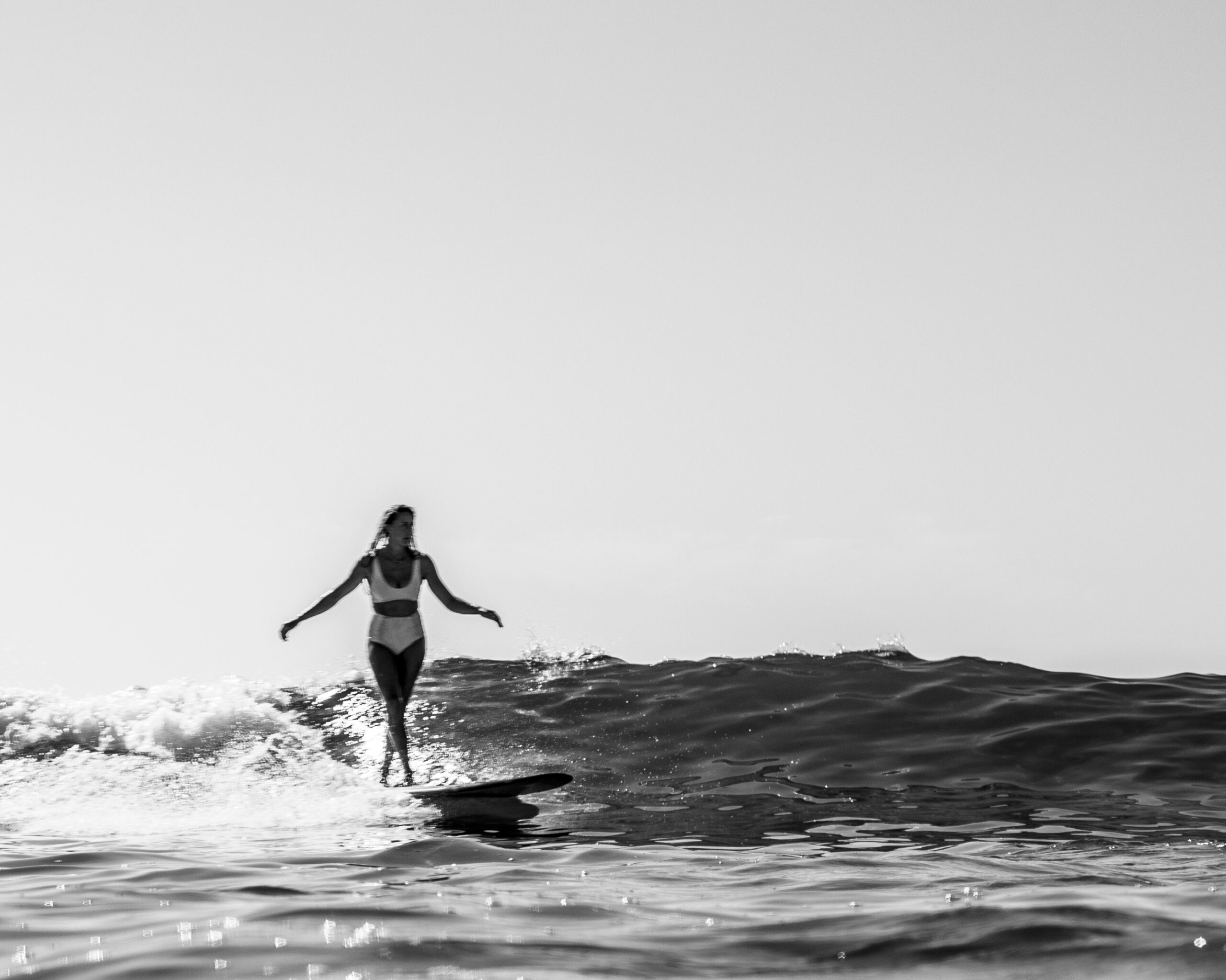 Evie Johnstone stepping her way to the nose. Photo by Nathan Benham.
Evie Johnstone stepping her way to the nose. Photo by Nathan Benham.
Longskate
You can now try to translate this footwork onto a longboard skateboard. Imagine a centre line running down the board and place your feet at a 45 to 55 degrees angle across that line. Have your knees slightly pointed forwards, with your feet slightly rolled to the sides. Try not to look down at your feet but look slightly ahead. By looking down at your feet, you are dropping your front shoulder - which then puts excess weight over your front rail, and may cause you to arc away from a straight line. Try to keep your front arm and shoulder both parallel.
Movement comes from the knees not the waist, head and shoulders.
As you put your front foot down toes first, start to lift your back foot up to keep a smooth transition. When your cross-stepping is controlled, noseriding starts to become much easier. Try to get a full hang five on the skateboard, and cross-step back. The most overlooked element of the physical nature of surfing is the importance of leg strength and how it affects your overall performance level. The stronger your legs, the easier it is to maintain and control good posture. Skateboarding is a great way to improve leg strength.
Into the Water
Surfing is unique because in involves three moving objects; the surfer, the board and the wave, all operating independently. Out in the water, a good place to start practicing the cross-step is at the end of a ride going straight in the whitewater. Just try a few steps forward and a few steps back. Then try this on the wave face, just a few steps forward, and few back to the starting position.
Don’t hurry - better to wipe out than to get into a bad habit of shuffling or hurrying.
Balance is best achieved when you maintain a centred posture with knees bent, head and shoulders up (with no bending forward at the waist) and your arms down to maintain the strongest and most efficient stance. The trick is to keep this posture as you move. With this in mind, try to cross-step again, slowly this time, concentrating so that you do not go up or forward as your foot moves from back to front. This requires you to keep your stationary leg well bent with no upward movement as you step.
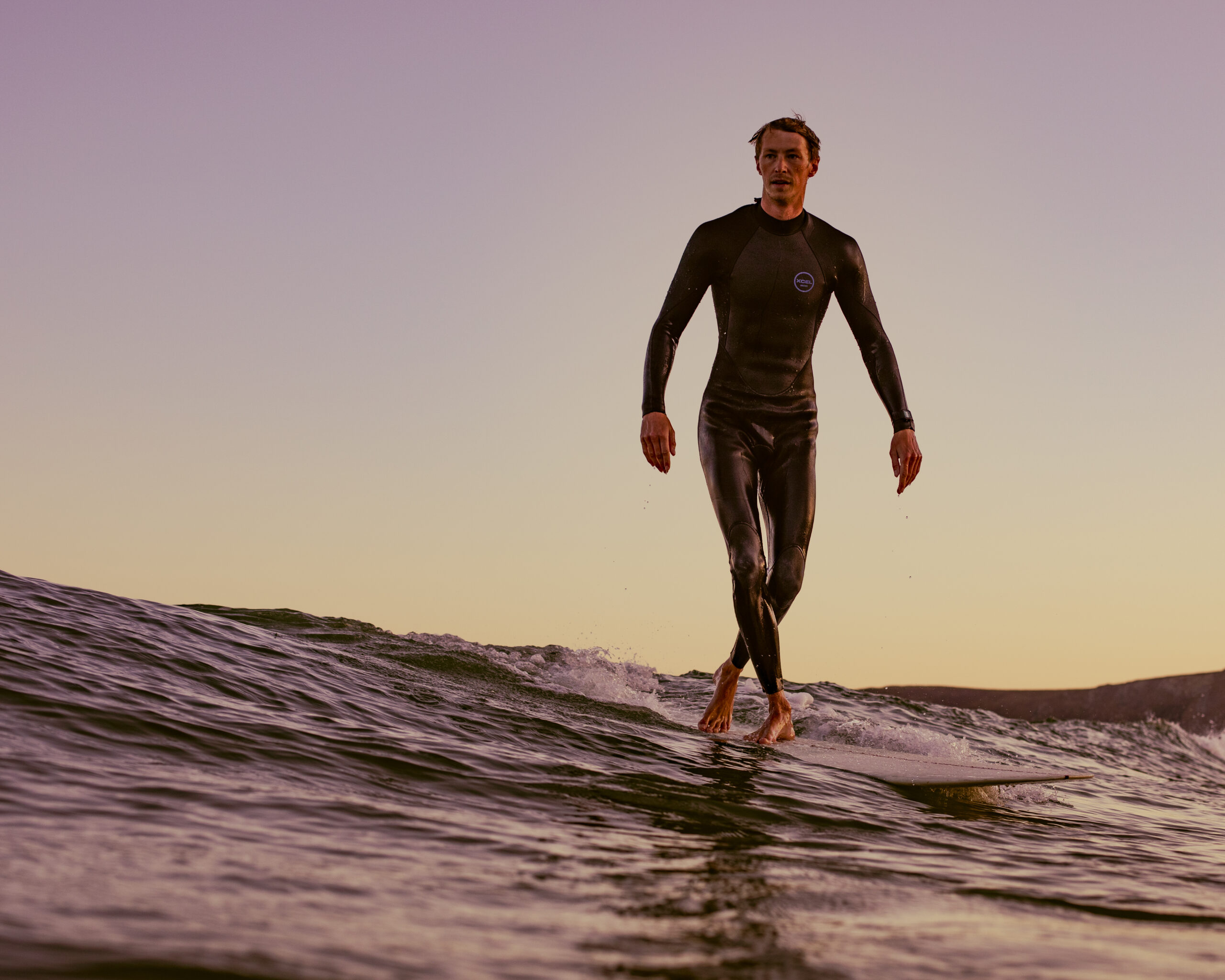 Surfer Chris Weston. Photo Nathan Benham.
Surfer Chris Weston. Photo Nathan Benham.
Try to stop mid step and hold this position for a few seconds. At this point you’re balanced on one foot. Again, cross-stepping is simply balancing on one foot at a time. As you start to put your foot down, land toes first, then bend your stationary knee more to bring your heel down. To successfully take the next step, you should briefly be in a balanced and centred position with equal weight on both feet before you initiate the next step.
The usual mistake is to rise up instead of bending you knees as you move.
This is the mind wanting you to be comfortable because it’s easier to stand taller than it is to bend your knees. The second mistake is made when instead of standing taller you try to have a low posture by breaking forward at the waist. This causes you to drop your head forward, stick your bum out and straighten your knees. This posture is comfortable, but doesn’t work, because you are no longer centred or using your legs at optimum strength and efficiency.
Walking into the Noseride
Now let’s think about using cross-stepping footwork to achieve the noseride. This starts with the set-up, holding your bottom turn a little longer than usual by applying weight to your back foot, which allows the board to stall as you lean on the inside edge, keeping you close to the pocket of the wave. You will now be aiming the nose slightly up the face towards the top third of the wave. To begin with, this will be a gentle stall, but as you improve you can use a fade takeoff, or a more drawn-out bottom turn to stall the board, with the general rule that the bigger stall, fade, or bottom turn, the deeper in the pocket you will be (and remember the best noserides happen in the steepest part of the wave). When you feel the wave catching up to the tail of the board, it is time to start walking up the board.
For the cross-step walk, use the stringer of your board as a centre line with your feet across it, or slightly pointed towards the nose. Keep your hands down, or outstretched at shoulder height to balance yourself, and try not to look down at your feet. As explained before, by looking down you are dropping your front shoulder, which puts excess weight over your front rails and may cause them to catch, meaning you will fall where you are looking.
The same applies to most board sports like snowboarding and skateboarding: you go where you look!
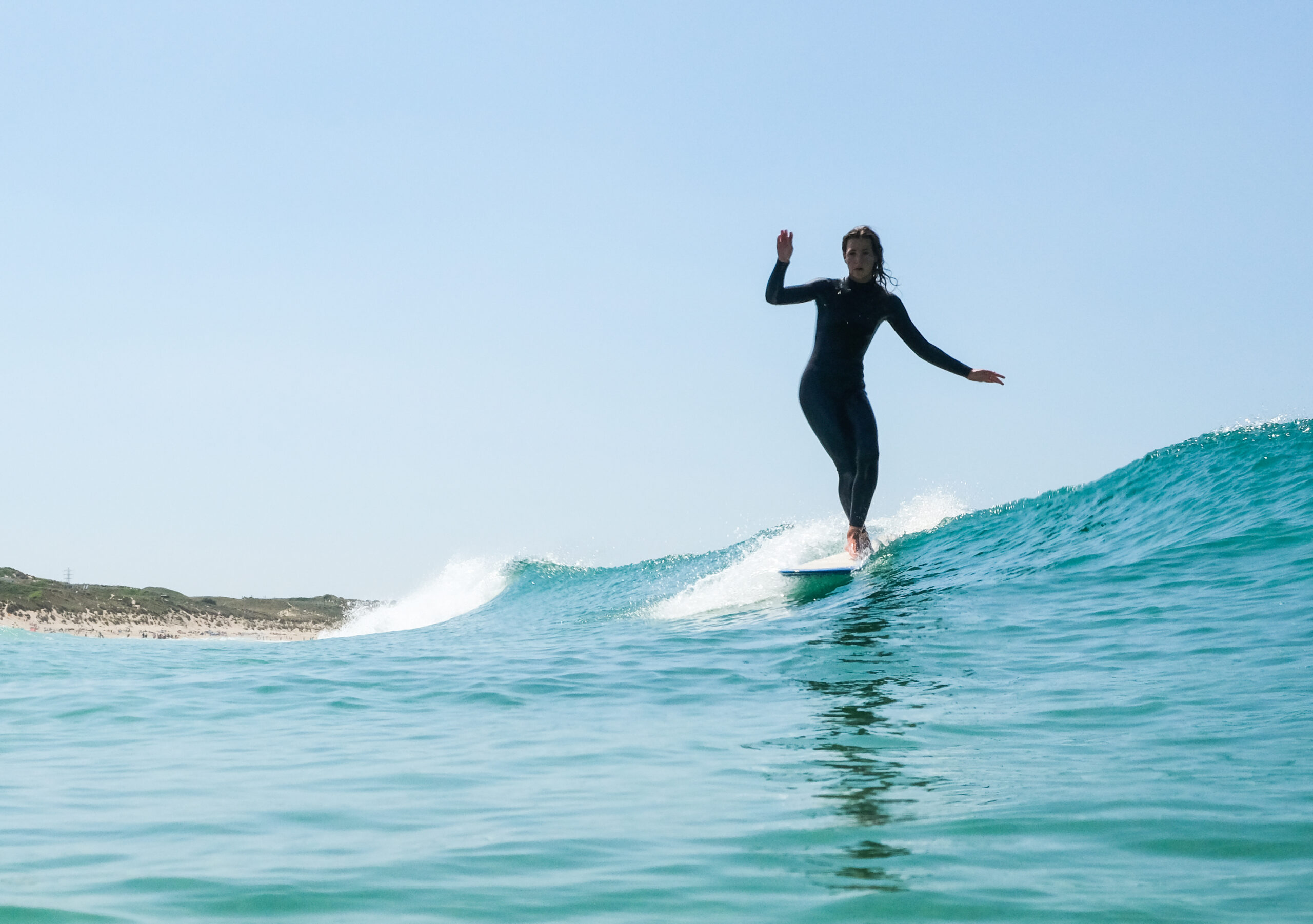 Izzy Henshaw. Photo by Caleb Giddens.
Izzy Henshaw. Photo by Caleb Giddens.
Begin each cross-step by lifting your front arm and shoulder, and keeping them parallel to the face of the wave. As you put your front foot down toes first, start to lift your back foot up to keep a smooth transition, always looking ahead, following the leading arm. Feel free to use your arms like wings to help you balance, and open up your fingers and palms. Clenched fists hold tension, but open those hands and you’ll feel lighter and better balanced.
During the cross-step, the board will return to the trim line, and when you reach the nose, the wave will be breaking over the tail of the board, locking it in the wave and lifting up the nose.
It cannot be emphasised enough how important it is to always look ahead. At the nose definitely try to roll all fives toes over the tip. This immediately gives you a feeling of control. Keep your knees slightly bent and apply weight towards your heels and back foot. Stay looking down the line and aim the board with your toes to ride through the section.
Toe control is vital. Through the toes you can feel when the tail locks in really tight. And if the board feels stable, try to bring the back foot forward and hang ten.
The best tens are when both feet are parallel to the stringer with all your toes over the nose of the board and your weight through the middle of your feet. Standing upright will spread your body weight evenly. Try to keep your arms down by your sides, and lean back to slow down, or forward to speed up, always ready to adjust to keep your balance.
 Surfer Ben Skinner. Photo Nathan Benham.
Surfer Ben Skinner. Photo Nathan Benham.
When you feel the board slipping or sinking, or if the wave is slowing down, or becoming too steep, cross-step back off the noseride. Keep your head up and your arms out to your side at shoulder height for balance, and remember not to look down at your feet. Pull back the hang ten foot, then the hang five foot, placing one foot behind the other, cross-stepping until you are back to the middle of the board if you want to keep the trim line, or the tail if you need to change direction and turn.
Practice, practice, practice is the way to learn. And study the stylemasters. The stall is the easiest way to set up for the quick noseride. Then with the right board in good conditions, with good footwork, you might start to pull of those stunning trim based noserides we all dream of.
-
Posted in
Helpful Surfing Info

